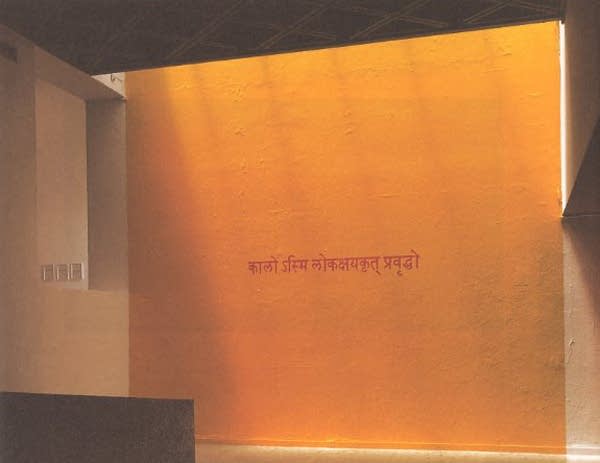Climatology takes on a new meaning
Go Deeper.
Create an account or log in to save stories.
Like this?
Thanks for liking this story! We have added it to a list of your favorite stories.

If Inigo Manglano-Ovalle hadn't become an artist, his show at the Rochester Art Center might prompt you to think he could have been a meteorological philosopher. Some of the pieces are huge metal sculptures of clouds and icebergs, others are sound-sculptures, like "Sonambulo Two Blue."
Sonambulo means sleepwalker in Spanish. He made the piece after his wife threatened to cure his insomnia by buying him a New Age CD of waterfalls and frogs. He compromised by agreeing to create his own recording of sound from their neighborhood, the south side of Chicago.

"One of the reasons I didn't want to go the New Age route was this whole notion that I had of a kind of sort of social denial, or social escapism. Bringing nature into the artificual rather than perhaps thinking that where we live and what we do is our nature or our natural state," Manglano-Ovalle says.
He took a recording of a gunshot from a drive-by shooting he witnessed. Then he morphed and extended the gunshot over 11 minutes with the help of sound engineers and fractal mathematicians.
Turn Up Your Support
MPR News helps you turn down the noise and build shared understanding. Turn up your support for this public resource and keep trusted journalism accessible to all.
Like a gunshot, Manglano-Ovalle's work strikes you immediately with its presence. "Cloud Prototype Number One" is 11 feet tall by 16 feet long. The looming cloud has a titanium alloy finish, and it was carved by a auto design company. Manglano-Ovalle says the sculpture is actually based on the core of a damaging storm cloud that tore across the Midwest several years ago.
"You know the cloud is this reflective form that wants to be opaque," he says. It's kind of completely different than any cloud you know of. It's not whispy or nothing. It's almost like an element, almost like a weapon, like a shield, right?"
Manglano-Ovalle's friend Luis Alonzo-Barkigia helped install the sculpture. As he buffs the metal, he offers his own interpretation.

"It's really nice, it's almost like a whale. A big cuddly whale," Alonzo-Barkigia says.
That's the duality of Manglano's art. "Cloud Prototype" can be cuddly or fierce, but Manglano-Ovalle says it speaks to larger shifts in society and climate.
"A lot of the storms that were coming through the Midwest were actually driven by another sort of climatological event happening in the South Pacific, which at that point was La Nina," he says. "So I was interested in that, the storm from the South, with the Spanish name, this event sort of crossing the border, transgressing, and moving into the heartland."
Manglano-Ovalle has consistently turned to science to build his work. But he steers clear of making science itself the point of his work. He says technology is a tool and a discussion point.
"What happens in science and in technology is a sort of barometer of culture," he says. "Because I don't look at the research lab as some ivory tower."

Instead he believes the consumer culture's desire for innovation and information drives its creativity.
In "Iceberg Number R11i01" Manglano-Ovalle used radar and sonar coordinates from the Canadian Oceanographic Society to create a skeleton of an iceberg with the same name. The sculpture is made up of hundreds of pieces of aluminum tubing that form triangles.
It looks like a spider web or an erector set. Manglano-Ovalle says each coordinate on the surface of the iceberg is replicated through a customized software.
This iceberg no longer exists. It melted in the Labrador Sea. But where you might think this sculpture is about global warming, it's really about fragile networks and momentary connectivity.
"So in a way much of the show is just this recording of the ephemeral and then holding it still or activating it in one way or another," Manglano-Ovalle says.
He points to a thumb drive plugged into one of the aluminum tubes at the base of the sculpture. He says the complete design and all the coordinates for the sculpture are stored on it. And that, he says, raises a question. Which is the sculpture and which is reality?




